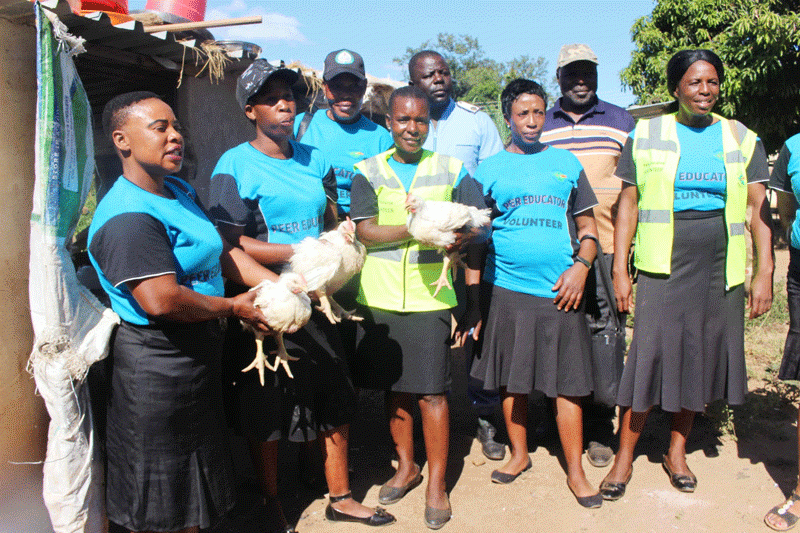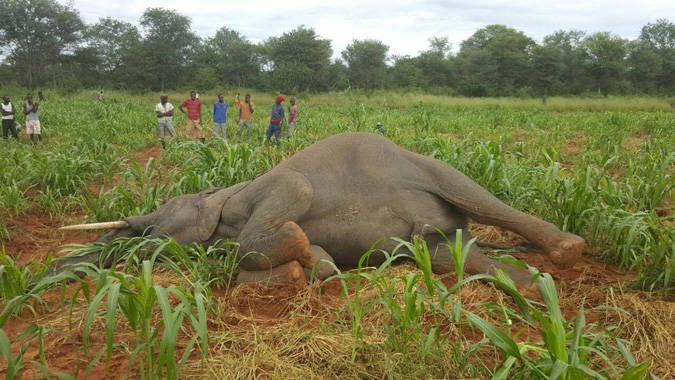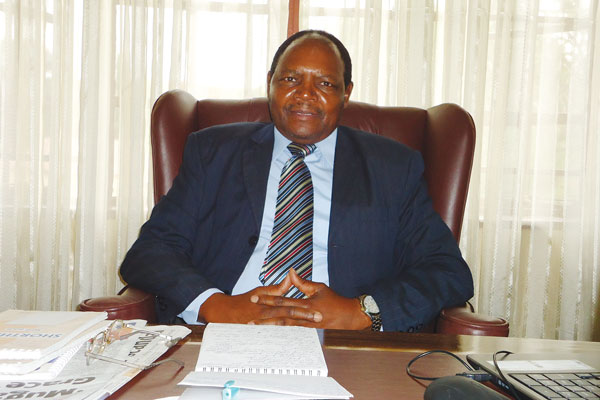
Teresa Kambarami* left her rural home in Chiwaka village, Chief Mukota in Mudzi, Mashonaland East province, for Kotwa growth point with the hope of finding a job so that she could look after her family.
It was a torrid time getting a decent job at the growth point, prompting Kambarami, a divorced mother of two, to abandon the job search and join the sex work bandwagon.
Within few months, Kambarami had turned out to be one of the most prominent sex workers plying her trade between Kotwa growth point and Nyamapanda border post.
However, life was not a bed of roses as Kambarami was exposed to many trials and tribulations that made her chosen career path grim compelling her to relocate.
She had to seek green pastures and joined the “great trek” to Makaha, a gold-rich community in Mudzi south.
Makaha business centre bustles with activity, from top-of-the range cars roaming the dusty roads, nascent eateries and beer outlets to bourgeoning informal business ventures, a recent visit to the area revealed.
For Kambarami and many other sex workers, the lively goings-on at Makaha have turned out to be worthwhile.
“I cannot complain at the moment,” she said.
- Zim coach in Rwanda success
- Miss Albinism vaccination drive gathers steam
- Kim rekindles her modelling dream
- Miss Albinism vaccination drive gathers steam
Keep Reading
“Business is better here as compared to Kotwa and Nyamapanda.
“During the day I operate an eatery with a friend and in the evening, I join my sisters in the bars and clubs.
“Both jobs are paying.”
However, just like any job, sex work has its own dilemmas.
Kambarami is among hordes of sex workers who are most vulnerable to gender-based violence (GBV) and sexually transmitted infections, including HIV in Mudzi district.
According to the 2024 national HIV estimates, Mudzi district has an HIV prevalence rate of 10,8% and an incidence rate of 0,11%.
Several factors heighten sex workers’ vulnerability to HIV and Aids as well as GBV.
Many sex workers face cultural, social and legal hurdles in life.
They also experience violence in the communities, on the job or in their personal lives, which increases their vulnerability to HIV and GBV.
A Zimbabwe Sex Worker Formative Research report shows that many sex workers report being beaten, threatened with weapons, raped and forced into sex.
“Some men pick you from the bar and take you to their place or yours and when you get there they refuse to pay and then at times that’s when beatings happen and you go and report to the police and they [police] say they are not part of sex workers issues,” Kambarami said.
In Zimbabwe, especially in rural communities like Mudzi, sex work is highly stigmatised and sex workers are often subjected to blame, labelling and discriminatory treatment.
There are no laws governing sex work and law enforcement agents rarely do anything to stop the violence experienced by sex workers.
Instead, the women are considered immoral and deserving of punishment.
Many sex workers consider violence “normal” or “part of the job” and do not have information about their rights.
It is against this background that the National Aids Council (NAC) has come up with a cocktail of HIV interventions to reduce HIV infections among key populations in Mudzi.
One such initiative is the peer-to-peer model for sex workers across the district, targeting HIV hotspots such as Kotwa growth point, Nyamapanda Border Post and Makaha in ward 14.
The approach seeks to empower social entrepreneurs from key populations to scale up existing or develop new business initiatives that generate sustainable social impact for their communities.
According to NAC, the thrust of the peer led model is to address the HIV and Aids and sexual reproductive health needs for vulnerable groups by giving them opportunities to learn from their peers.
“When sex workers have a stable income, they are less vulnerable and can advocate for safer sex practices, reducing the risk of HIV transmission,” said NAC district Aids coordinator for Mudzi, Trader Muzamhindo.
“This initiative was introduced in response to concerns from sex workers that their trade is no longer financially viable.
“We want to empower these sex workers economically to enable them to negotiate for safer sex and make informed reproductive health choices.”
Muzamhindo said they have engaged the Women Affairs ministry to help with the capacity building of sex workers in areas of savings, popularly known as Mikando.
Apart from income-generating projects, peer educators have also been trained in HIV prevention methods, including pre-exposure prophylaxis, post-exposure prophylaxis, adherence to antiretroviral therapy, and general healthcare.
“We have been capacitated on issues around sexual reproduction health and we are passing that information to our colleagues,” said one of the peer educators Georgina Chokuposhiwa.
“These income generating projects are helping us in a number of ways and we are happy that we are getting empowered with each day that passes.
Chokuposhiwa said she was selected to mentor her colleagues because it wouldn’t be effective for married women to teach sex workers in their workspaces.
Apart from coordinating a thriving Mukando group, the peer-to-peer model has helped the sex workers establish other economic projects.
“We have 100 chickens, including road runners and broilers under our poultry project,” said Chokuposhiwa.
“We are hoping to expand the project because of the demand.
“We are also doing cattle rearing and like the poultry project, we want to increase the number of beasts that we have.”
According to Muzamhindo, there are 17 peer educators drawn from sex workers dotted across the district.
“A large chunk of these peer educators are here in Makaha because we feel there is a lot of activity happening because of mining activities,” she said.
“These peer educators engage fellow sex workers and conduct education through outreaches and refer them to clinics if there is need.
“They are not focused on sex workers, but they can also engage their clients.
“I am happy that these ladies have flourishing projects including poultry, cattle rearing, décor and they have a traditional dance group.”
There are approximately 820 sex workers across Mudzi district constituting 75% of key population.
Muzamhindo said they were working with the Health ministry to conduct outreach programmes across the district, which has enabled communities in marginalised areas like Badze and Rwamba access health services.
She said the services include cervical cancer screening, STIs screening, HIV testing and counselling as well as high blood pressure testing, among others.
Makaha (ward 14) councillor Charles Mayonga welcomed the peer-to-peer initiative and many others offered by NAC and its partners in a bid to reduce HIV infections.
“As you can see, there is a lot of activity at the business centre because of gold mining,” he said.
“We have welcomed this programme where we are seeing these ladies coming up with these income generating programmes.
“You will realise that communities look down upon sex workers, but if these ladies have projects, no one would ridicule them.
“We are very thankful to NAC and the Health ministry for such a noble programme.
“They have many other intervention programmes targeted at different age groups, including young women and girls, artisanal miners and people suffering from TB.”
Mayonga said they were hopeful such programmes would continue despite the withdrawal of donor support, especially in areas around ARV provision.
John Zengenene of Mabhande village in ward 14 also welcomed the initiative saying it will go a long way in raising awareness on HIV and STIs.
“There is a lot of activity at night at the business centre,” he said.
“These programmes are the best in the sense that they involve the players themselves.
“They are sharing information among themselves and that same information will get to the clients.”
The peer-to-peer model is among several HIV intervention approaches that were launched by NAC as a drive to revolutionise and scale up prevention services to communities.
This is in response to high HIV incidence among specific populations sub groups such as sex workers, prison inmates, artisanal miners and others.
NAC adopted the models to bring combination HIV prevention interventions to population sub groups that are at increased risk of HIV infection.
Adopted models include the Bortha2Brotha, which focuses on addressing sexual reproductive health needs of adolescent boys and young men.
The Sista2sista model seeks to empower adolescent girls and young women with sexual reproductive health services.
The modified Determined, Resilient, Empowered, Aids-free, Mentored and Safe, popularly referred to as Dreams, focusses on reducing new HIV infections among adolescent girls and young women aged 10 to 24 years who are vulnerable and at risk of getting HIV infection.
NAC’s finance and administration manager Albert Manenji said the country requires above US$400 million annually for HIV intervention programmes according to the Zimbabwe National HIV and Aids Strategic Plan (ZNASP).
Manenji told journalists attending a workshop in Chinhoyi last Thursday that a large chunk of HIV intervention support was coming from foreign funding.
ZNASP has been guiding the HIV programming, resource allocation and implementation of the HIV response since 2021 until the end of this year.
“The country requires above US$400 million yearly according to the ZNASP,” Manenji said.
“The resource will support interventions under thematic areas namely prevention, care, treatment and support; programme coordination and monitoring as well as programme logistics and support.”
Zimbabwe has over the past 10 years turned the tide over HIV and according to the World Health Organisation; the country has successfully achieved the 95-95-95 UNAids Fast-Track targets for adults, underscoring the country’s ongoing commitment to tackling the HIV epidemic.
These targets mean that 95% of people living with HIV know their status, 95% of those diagnosed are receiving treatment and 95% of those on treatment have achieved viral load suppression.
The latest HIV estimates suggest a positive trend, with the prevalence of HIV among adults aged 15 to 49 years declining from 12,69% in 2019 to 10.49% in 2023.
Manenji said the HIV’s success story has been made possible by international support that contributes a large chunk while domestic funding, mainly from the Aids Levy caters for the remainder.
However, Health and Child Care minister Douglas Mombeshora has urged people living with HIV not to panic as the country has enough antiretroviral drugs..
“You are probably all now familiar with the recent abrupt cut in funding by the government of the United States of America and its potential implications for the response to HIV and related diseases in our country,” he said.
“As government we have already begun to put strategies in place to ensure that our people are not vulnerable.
“The wisdom of government in establishing the National Aids Trust Fund (commonly known as the Aids Levy) has now been amply demonstrated by the need to have sustainable domestic funding mechanisms in cases of donor withdrawal.
“In addition to the levy, government is working on various long-term initiatives, which include the National Health Insurance and others.
“We have put in place US$12 million to acquire new stock of antiretroviral drugs and in June we are getting a new stock that will take us to the end of the year.
“There is no need to panic; we have prioritised the provision of HIV medicine because we want to maintain the treatment of people living with HIV. We don’t want them to default because we fear the consequences.”
Mombeshora said the government was now planning without donors in mind.
“This is not about the health sector, but it cuts across all sectors,” he said.
The Health minister said at this stage where Zimbabwe has made significant strides in the fight against HIV and Aids, the nation cannot afford to be complacent.
“HIV and Aids remain significant public health challenges, and the landscape of the epidemic is constantly evolving,” he said.
“New HIV cases continue to be high among specific vulnerable populations such as adolescent girls and young women and sex workers, while treatment coverage remains lower among children.
“In addition to this, emerging challenges, such as the need to reach key populations and ensure sustained adherence to treatment, require innovative approaches and a collective effort.”
*Not her real name










